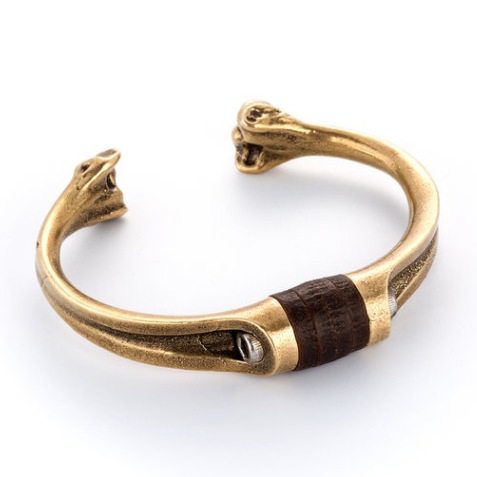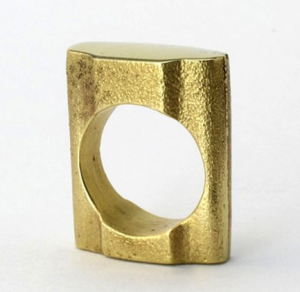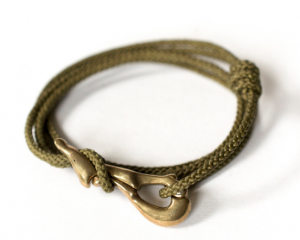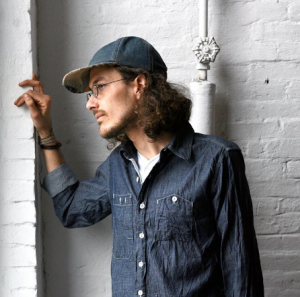
“Working with metal was the first thing I’d ever done that I had a natural aptitude for,” says Cat Bates, the Portland, Maine–based jewelry designer whose unisex, namesake collection is stocked by Esqueleto in Oakland, Calif., and Quercus Studio in Raleigh, N.C., among others.
The designer, whose love of nautical mechanisms and knots stems from an early childhood spent on Maine’s Monhegan Island (population 75 in the year 2000!), launched his business as a sophomore in college—and says he got serious about it as a brand in 2011.
“It took a couple of years, but there was never any doubt about what I would do,” he says. We caught up with Bates to talk about his collection and what inspires him as a designer:
JCK: What inspires you most in your designs?
Cat Bates: When I started out I think one of the first inspirations I would cite would be mechanisms. I was fascinated with clasps and closures from the get-go. They would be the centerpieces of my designs….a lot of those are based on the nautical. Growing up on Monhegan Island, I think a lot of my designs had a natural, nautical feel to them. I also had a side interest in decorative knotting—hand-braiding and dying and treating cord is still an important part of my designing.
But at this point, my primary [inspiration] is manufacturing technology, looking at high industry and the technologies that are developed there; 3-D printing has come into my practice, too. Utilitarian hardware is another inspiration. That idea of form following function is really important to me. Even if it’s a really simple function—like going around your wrist.
JCK: How do you think your pieces fit into the lives of the people who wear them?
Bates: I hope my designs blend into the wearer’s appearance. I want them to be part of what makes the person beautiful. But I don’t want them to necessarily call attention to themselves. The reasoning for this is I would hate for my pieces to be visually more engaging than the wearer. Another thing I think about a lot—I think about the pieces changing with wear and becoming part of the wearer. Myself and the wearer are in collaboration, really; the piece will patina naturally within their lifestyle.

Sand-casted Token ring, $85

Pelican Clip brass-and-nylon bracelet, $135
JCK: What jewelry designers do you admire—and why?
Bates: I’ve had some really [important] mentors—Sharon Portelance, Tina Rath, and Jeffrey Clancy were three core professors of mine at Maine College of Art. I’m sure I am to a degree influenced by their work, but not nearly as much as I am by their work ethic. They pushed me hard, but they got me through school. A jewelry designer I like is Parts of Four (P4). There’s this underlying sense of urgency to their designs that I’m drawn to.

Designer Cat Bates (Image: @catbates)
JCK: You use a lot of rope and leather and cord—some people are hesitant to invest in pieces with elements that might wear out. What’s your thinking on this?
Bates: I subscribe to the philosophy that everything wears out eventually and that’s not a bad thing. I will talk to customers about the materials. Some will last decades, some will last a couple of years. On the higher-end pieces, I’m focusing on cordage that lasts longer. I’m also thinking about replacing cordage. I source that primarily from the commercial fishing industry, and I buy most of my cord at a local marine-supply store. I process most of it—dying and braiding it into a more complex cordage.
JCK: Who is your core customer? What do you think she/he looks for in your collection?
Bates: Certainly it’s a unisex customer between 20 and 45 years of age, interested in subtlety and simplicity. Someone who prioritized content over material value. My customers know that what they are paying for is almost entirely craftsmanship, something I’ve heard a number of times that makes me happy.
(Top: The Poise cuff in brass, $185; all images courtesy of Cat Bates)
- Subscribe to the JCK News Daily
- Subscribe to the JCK Special Report
- Follow JCK on Instagram: @jckmagazine
- Follow JCK on X: @jckmagazine
- Follow JCK on Facebook: @jckmagazine